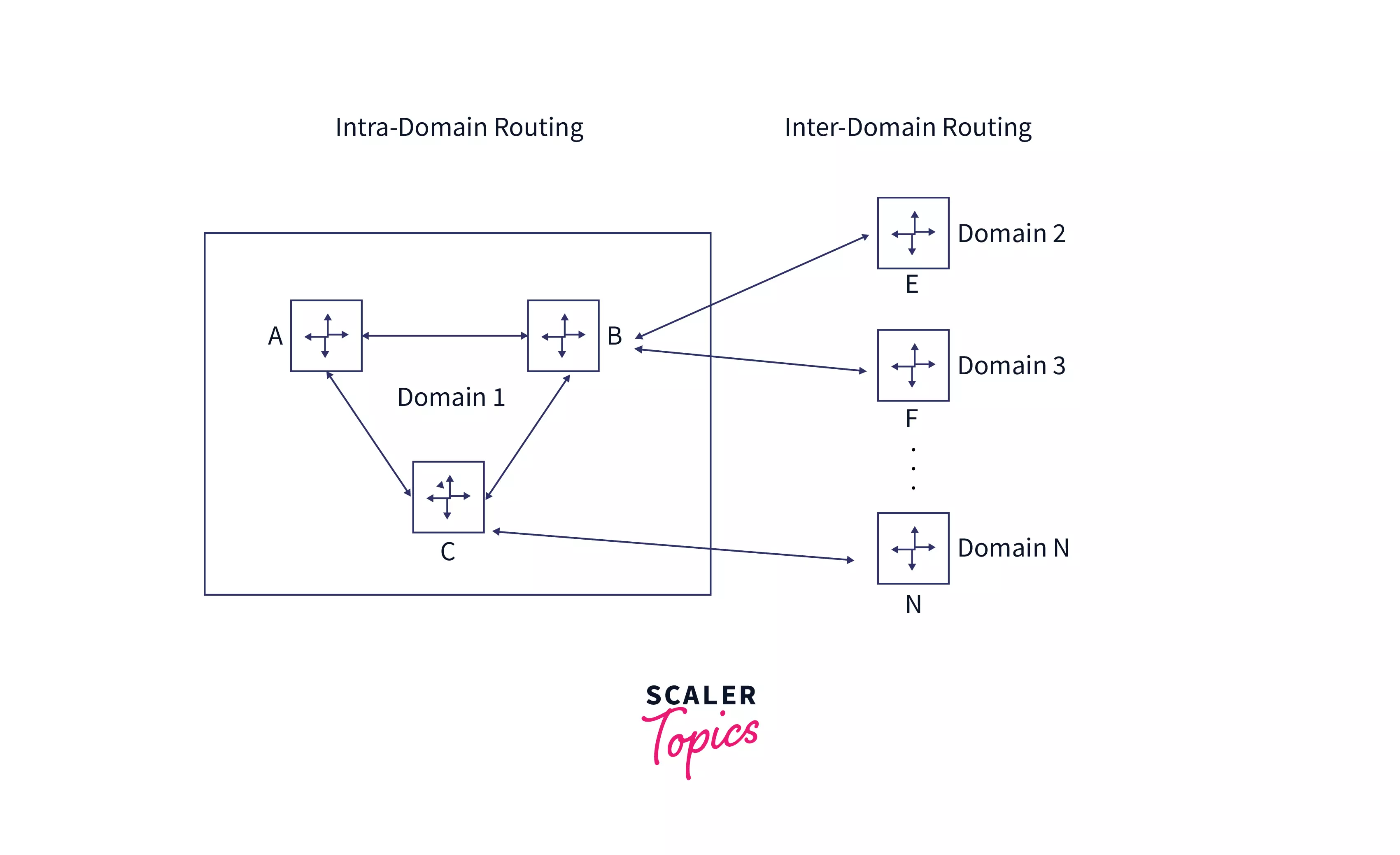Routing is the process of choosing a path for transferring data from a source to a destination. Routing is performed using devices called routers. In order to send the packet by determining the best route from one network to another, routing is carried out at the network layer. The network layer primarily makes sure that each packet arrives at its intended destination from the point of origin. Speaking about intradomain and interdomain routing, the basic difference between the two is that interdomain routing operates both within and across domains (a domain is a set of devices in a network that communicate and share data among each other), whereas intradomain routing operates only within a domain.
Difference between Intradomain and Interdomain Routing
Let’s discuss interdomain and intradomain routing separately, and then we’ll look at the key differences.

Interdomain Routing
Interdomain Routing is the protocol in which the routing algorithm works both within and between domains. Domains must be connected in some way, for hosts inside one domain to exchange data with hosts in other domains. This connection within domains is governed by the interdomain routing protocols. This is often done using the Border Gateway Protocol (BGP). It is used in Path Vector Routing using which interdomain routing is performed. In path vector routing, the routing depends on the analysis of the path from the nodes in the current domain to the node in the other domain, and not on the distance between nodes.
Intradomain Routing
Intradomain Routing is the routing protocol that operates only within a domain. In other words, intradomain routing protocols are used to route packets within a specific domain, such as within an institutional network for e-mail or web browsing. Unlike interdomain routing protocols, it doesn’t communicate with other domains. There are two types of protocols used for intradomain routing:
- Distance Vector Routing (uses Routing Information Protocol or RIP) In distance vector routing, each node in a domain stores information about its neighboring nodes. The information is stored in a table known as a routing table, which is maintained by each node in the domain. RIP is one of the earliest distance-vector routing protocols, and it uses hop count as a routing statistic. By placing a cap on the maximum number of hops that may be taken between a source and a destination, RIP avoids routing loops.
- Link State Routing (uses Open Shortest Path First or OSPF) In link state routing, each node in a domain stores information about all the other nodes in the domain, in other words, the routing table of each node stores information about the entire topology of the domain. Since each node has all the information about the domain at its disposal, Dijkstra’s algorithm is used to calculate the best routing path. This is possible due to OSPF, and this is also its advantage.

Differences
Now that we know quite a bit about interdomain and intradomain routing protocols, let’s look into some key differences between them.
| Basis | Interdomain Routing | Intradomain Routing |
|---|---|---|
| Definition | The interdomain routing algorithms are used for routing within as well as with other domains. | The intradomain routing algorithms are used for routing within domains. |
| Router information | It requires information about the routers in the current domain as well as other domains. | It requires information only about the routers in the current domain. |
| Protocols | For interdomain routing, the protocols used are known as exterior-gateway protocols as they route traffic outside as well as inside a domain. | For intradomain routing, the protocols used are known as interior-gateway protocols as they route traffic within a domain. |
| Types | Interdomain routing is done using Path Vector Routing which uses the Border Gateway Protocol (BGP). | Intradomain Routing is of two types: Distance Vector Routing (uses Routing Information Protocol (RIP) and Link State Routing (uses Open Shortest Path First (OSPF). |
| Internet | The Internet is assumed to be a collection of interconnected autonomous systems by the interdomain routing protocol. | The internet outside the autonomous system is ignored by intradomain routing protocols. |
Conclusion
- Routing is the process of choosing a path for transferring data from a source to a destination. It is performed using devices called routers. Routing happens in the network layer.
- Interdomain Routing allows hosts inside one domain to exchange data with hosts in another domain. This is done using Path Vector Routing.
- Intradomain Routing is the routing that is concerned with data transfer only within a specific domain. This is done using either Distance Vector Routing or Link State Routing.
